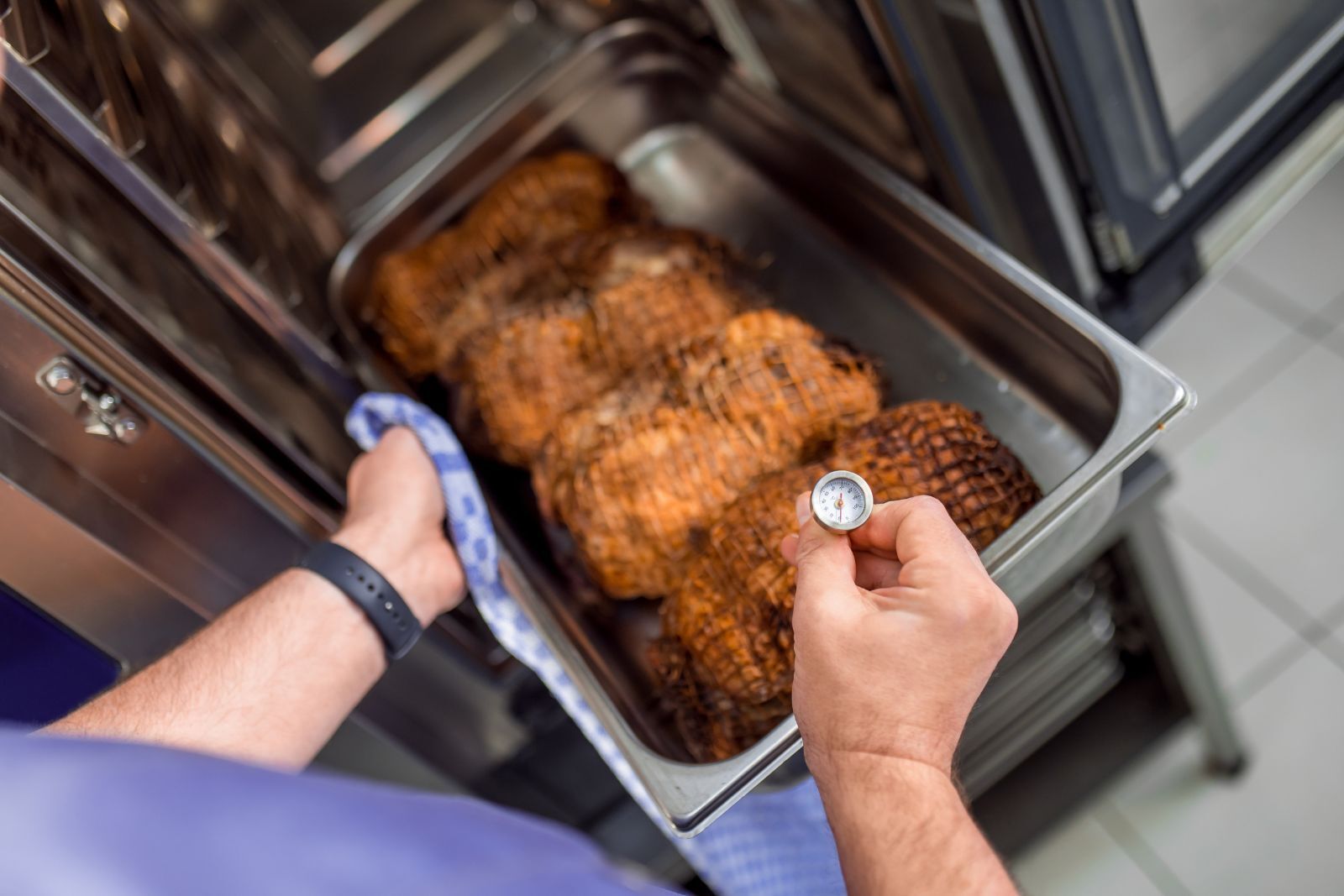There is one tried and true principle in food handler safety: keep hot food hot, and cold food cold. This is the best way for foodservice workers to keep food out of the "Danger Zone," or the temperature range where bacteria can grow at an alarming rate.
In this article, we will cover all you need to know when it comes to the temperature danger zone, including:
What are the basics of the temperature danger zone?
Time and temperature control cheat sheet
Conflicting information about the temperature danger zone
Why is there a disconnect between the USDA, FDA, and what's offered as guidance for consumers?
What are the basics of the temperature danger zone?
The U.S Department of Agriculture (USDA) Food Safety and Inspection Service sets the Temperature Danger Zone as the range of temperatures between 40°F and 140°F and the U.S Food and Drug Administration (FDA) defines the "Zone" as between 41°F and 135°F.1,2 This temperature range creates an environment where dangerous bacteria can sometimes double in number in just 20 minutes.
While any food could potentially host dangerous pathogens, foods we typically think of as “perishables” tend to grow contaminants at a much more prolific rate. In the realm of safe food handling practices, these are known as TCS Foods, or foods that need time and temperature control for safety. There are six factors that affect bacterial growth in food: time, temperature, moisture, acidity, nutrients, and oxygen–and TCS Foods are most likely to be affected by all six factors.3
The list of these foods includes milk and dairy products, eggs, meat (beef, pork, and lamb), poultry, fish, shellfish and crustaceans, baked potatoes, tofu or other soy protein, sprouts and sprout seeds, sliced melons, cut tomatoes, cut leafy greens, untreated garlic-and-oil mixtures, and cooked rice, beans, and vegetables.4
The USDA also recommends having a food thermometer on hand and explains the importance of cooking to the proper internal temperature below:
Time and temperature control cheat sheet
-
Never leave food out of refrigeration for more than two hours.
-
Keep hot food hot (at or above 140 °F) with chafing dishes, steam tables, slow cookers, etc.–especially if you aren’t serving it right away.
-
When reheating foods, they should always be reheated thoroughly to an internal temperature of 165°F. Make sure foods are covered and rotated so they heat evenly.
-
Keep cold food cold (at or below 40 °F) by placing food in containers in coolers filled with ice or packed with ice packs.
-
The improper cooling of cooked foods is the most common cause of foodborne illness. TCS Foods must pass through the Temperature Danger Zone as fast as possible-two hours or less–to prevent this.
-
Always reduce the size of a dish to efficiently begin the cooling process. Ice-water baths, ice paddles, blast or tumble chillers, and using cold water as an ingredient are all safe and effective methods to cool foods.
-
During hotter months, be extra aware of your time and temperature control practices. Foodborne illnesses tend to increase during the summer since bacteria multiply much faster when it’s warm.6
Conflicting information about the temperature danger zone
As a food handler, you may encounter some conflicting information about temperature danger zones, specifically as it relates to food code standards, the USDA, and what public education in this area covers.5
The FDA and the USDA have two different-and very separate-standards for foodservice and food retail and consumer education temperature danger zones.
Federal regulations state that a temperature danger zone of 41°F to 135°F should be observed for foods that require temperature or time control for food safety. Foods should also stay in the temperature danger zones for no more than four hours, from preparation through service.
With that said, foods that have to be cooked to a minimum internal temperature can have the clock start over after that cooking time.
For example, once chicken is cooked to a safe temperature, the four-hour timer can be restarted.
For consumers, though, it's recommended that the range be 40°F to 140°F (a wider range). Perishable foods should only be kept in the temperature danger zone for two hours, not four, and if the temperature of the room is over 90°F, that limit is reduced to just one hour.
Why is there a disconnect between the USDA, FDA, and what's offered as guidance for consumers?
One reason is that there's less control (and oversight) for consumer food handling, so organizations use different temperature danger zone time allowances and temperatures. They provide a greater margin of safety-better safe than sorry, after all.
Let's look at one specific example to give you an idea of the differences:
The FDA Food Code dictates that restaurants should cook ground beef to a temperature of 155 °F for 15 seconds. However, the USDA (along with the CDC) say that ground beef should be cooked to 160 °F. The guidance for consumers is, then, also different.
Ultimately, it's easier to meet the temperature standard than to meet the two standards of both temperature and time, so most consumer guidance states that you should cook ground beef to 160°F, as recommended by the USDA, to kill germs.
The takeaway
Bottom line: whether cooking or cooling food, food handlers need to pass dishes through the temperature danger zone as quickly as possible. Whether you're a consumer or a food handler, being as cautious as you can is vital to keeping everybody safe.
** This article was updated on March 30, 2023 to address the conflicts in the specific range of the Temperature Danger Zone.**
Sources:
-
- USDA: "Danger Zone" (40°F - 140°F)
- Minnesota Department of Health: Time/Temperature Control for Safety Food
- SmartSense: What Is Time/Temperature Control for Safety (TCS)?
- Gordon Food Service: Tips for Time and Temperature Control (TCS) Foods
- FCS: Tale of the Two Temperature Danger Zones
- Food Safety: Food Safety by Events and Seasons






.png)

.png)
